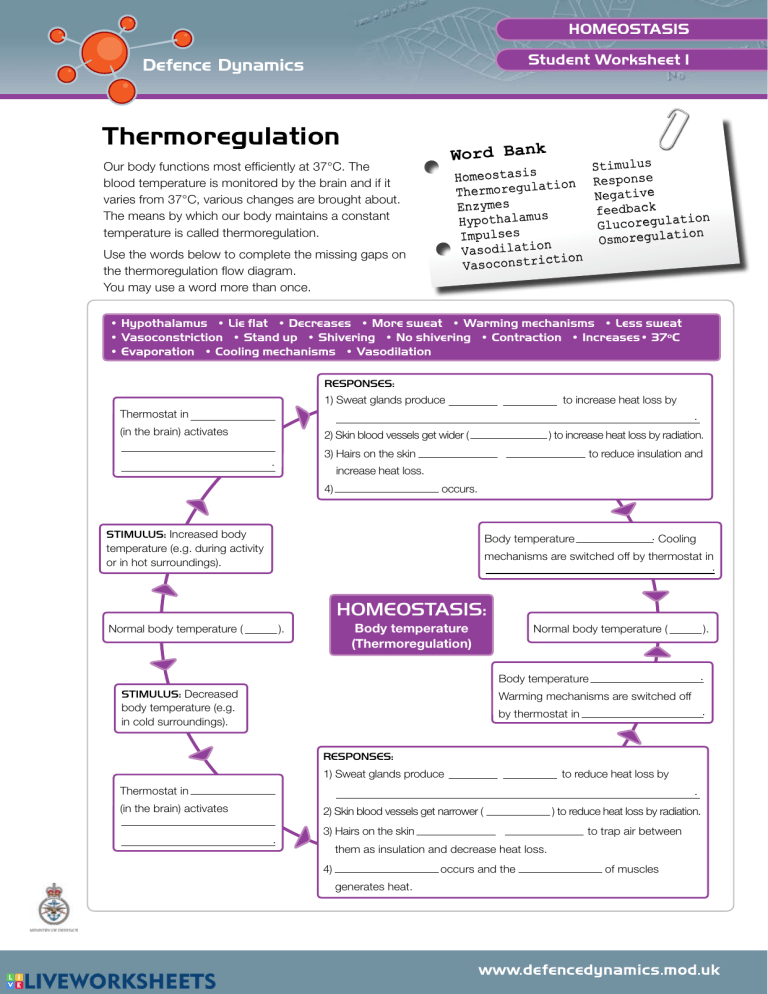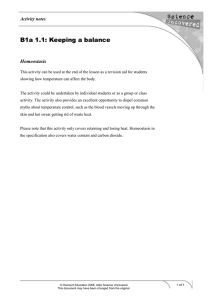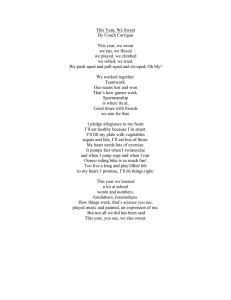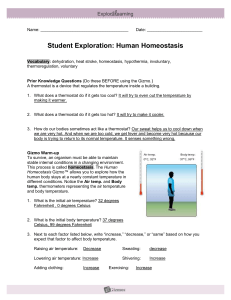
HOMEOSTASIS Student Worksheet 1 Thermoregulation Word Bank Our body functions most efficiently at 37°C. The blood temperature is monitored by the brain and if it varies from 37°C, various changes are brought about. The means by which our body maintains a constant temperature is called thermoregulation. Homeostasis ation Thermoregul Enzymes s Hypothalamu Impulses n Vasodilatio ction i Vasoconstr Use the words below to complete the missing gaps on the thermoregulation flow diagram. You may use a word more than once. Stimulus Response Negative feedback tion Glucoregula ion Osmoregulat • Hypothalamus • Lie flat • Decreases • More sweat • Warming mechanisms • Less sweat • Vasoconstriction • Stand up • Shivering • No shivering • Contraction • Increases• 37ºC • Evaporation • Cooling mechanisms • Vasodilation RESPONSES: 1) Sweat glands produce more sweat to increase heat loss by Thermostat in . (in the brain) activates 2) S kin blood vessels get wider (vasodilatio n) to increase heat loss by radiation. 3) Hairs on the skin lie flat . to reduce insulation and increase heat loss. 4) No shivering occurs. STIMULUS: Increased body temperature (e.g. during activity or in hot surroundings). Body temperature decreases . Cooling mechanisms are switched off by thermostat in . HOMEOSTASIS: Normal body temperature (37 ). Body temperature (Thermoregulation) Normal body temperature (37 Body temperature increas STIMULUS: Decreased body temperature (e.g. in cold surroundings). ). es. Warming mechanisms are switched off . by thermostat in RESPONSES: 1) Sweat glands produce more sweat to reduce heat loss by Thermostat in . (in the brain) activates 2) S kin blood vessels get narrower (vasodilatio . n) to reduce heat loss by radiation. 3) Hairs on the skin lie flat to trap air between them as insulation and decrease heat loss. 4) No shivering generates heat. occurs and the contrac of muscles




